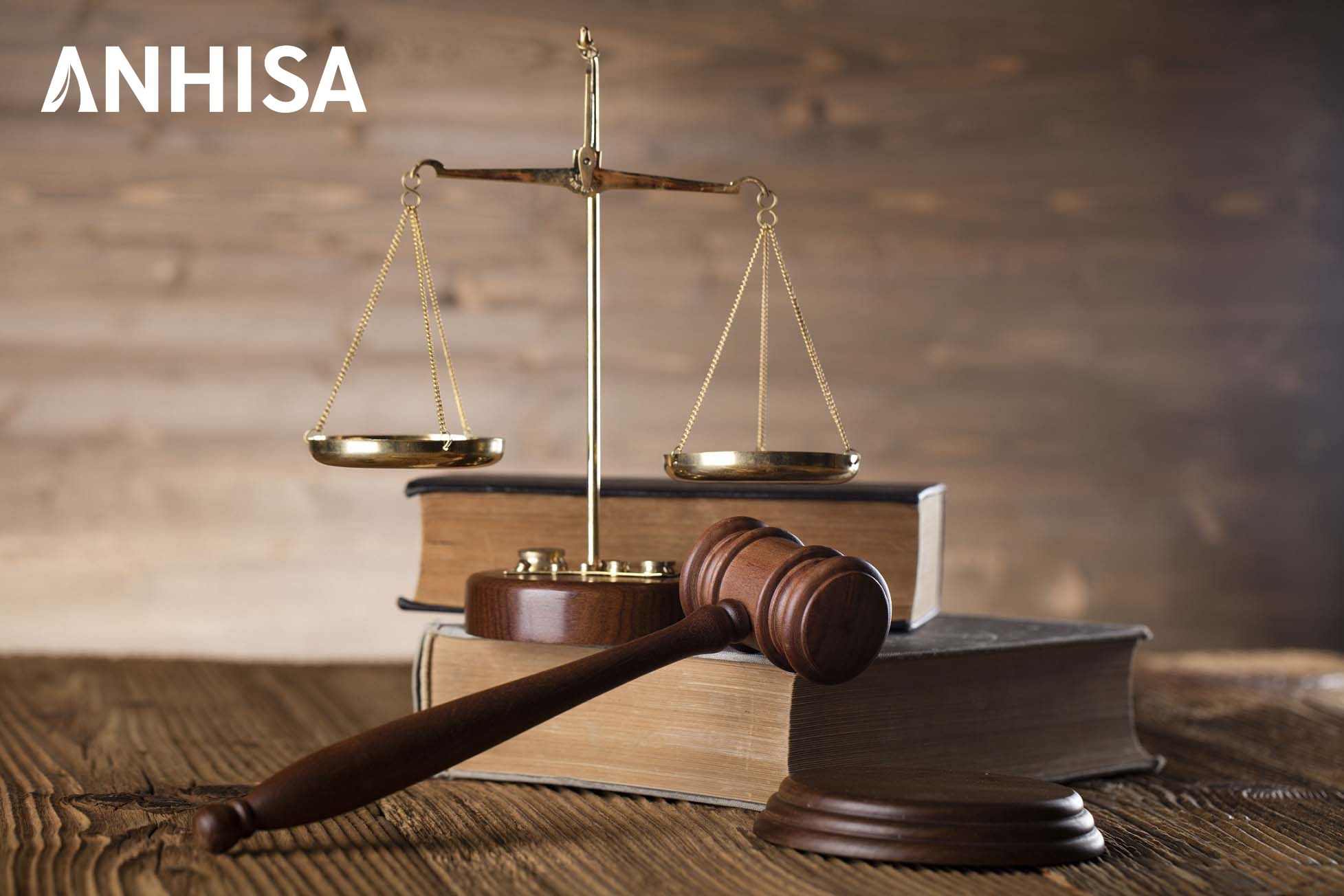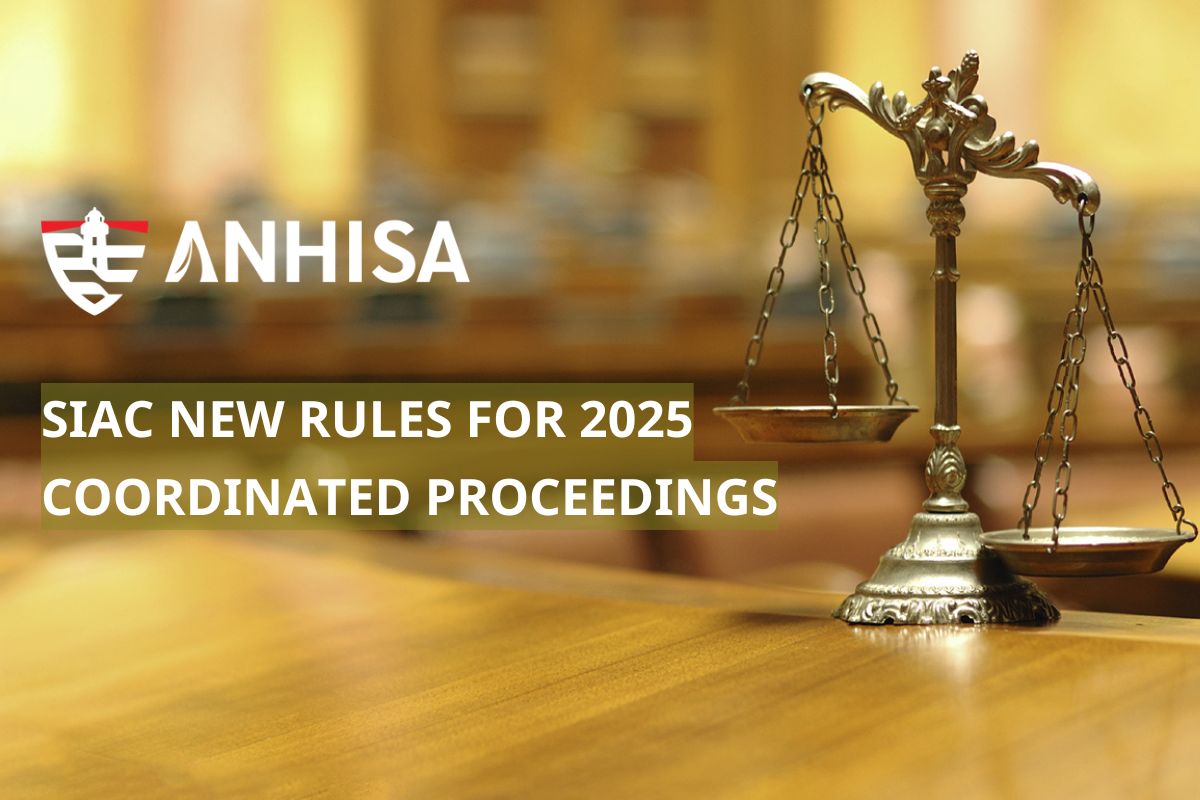Foreword
The evolving complexity of global commerce and cross-border transactions has led to increasingly intricate disputes involving multiple parties and contracts. The Singapore International Arbitration Centre (“SIAC”), with its commitment to providing innovative and efficient solutions, has introduced Rule 17 of the 7th edition of the Arbitration Rules of SIAC, effective 1 January 2025 (“SIAC Rules 2025”).
Rule 17 of SIAC Rules 2025 introduces the concept of Coordinated Proceedings, which is designed as a groundbreaking mechanism to address the complexities of multi-contract and multi-party disputes. This provision, known as Coordinated Proceedings, allows related disputes to be managed together, helping to eliminate cost duplication and reduce the risk of inconsistent outcomes across related arbitrations. By coordinating the proceedings, Rule 17 ensures that related issues are resolved consistently, reducing the risk of conflicting outcomes. This mechanism provides a more streamlined and efficient approach to handling interconnected disputes, making the arbitration process more practical for modern, multi-party cases. Ultimately, it reflects SIAC’s commitment to adapting arbitration procedures to meet the needs of contemporary commercial disputes.
Through this article, ANHISA seeks to offer a thorough exploration of Coordinated Proceedings, shedding light on how this innovative mechanism benefits both parties and arbitral tribunals in effectively resolving complex disputes.
Key Aspect of Rule 17 – An Innovative and Valuable Mechanism
Expanding upon Rule 6, Rule 7, and Rule 8 of the 6th edition of the SIAC Arbitration Rules (“SIAC Rules 2016”), which address multi-contracts, joinder of parties, and the consolidation of arbitrations into a single proceeding, Rule 17 establishes a coordinated approach for resolving multiple arbitrations that involve overlapping legal or factual issues, where a single tribunal is appointed to handle them.
Rule 17 provides conditions and method of coordinating arbitrations, with the provision for suspending one arbitration pending the resolution of another being considered one of the most innovative elements of the Rule.
It can be seen that Rule 17 of SIAC Rules 2025 is designed to prevent cost duplication and mitigate the risk of inconsistent outcomes across multiple proceedings in multi-contract, multi-party disputes.
Benefits of Coordinated Proceedings
Streamline the resolution process and avoiding conflicts
The Coordinated Proceedings mechanism, as introduced in Rule 17 of the SIAC Arbitration Rules 2025, is particularly valuable in certain types of disputes that arise from standard form agreements or back-to-back contracts. These kinds of agreements are often used in industries like shipping, infrastructure, banking and finance, construction and trading.
In particular, in these sectors, multiple parties are typically involved in complex transactions that share common legal or factual issues.
Coordinating the arbitration proceedings can help streamline the resolution process and avoid conflicting outcomes, therefore, enhance the efficiency of arbitration resolving complex disputes sharing the similar legal issues.
In sectors like construction and maritime, multiple parties are often involved in complex transactions that share common legal or factual issues.
For example, in construction, a project may involve various contractors, subcontractors, suppliers and employer, project manager, all of whom may have overlapping contractual obligations and liabilities. A dispute might arise, for instance, over delays caused by handing over the construction site, delays in disbursement or capital mobilization where both the main contractor and subcontractors are affected, but their claims (for example claims for extension of time for completion) are interrelated. Coordinating arbitration proceedings in this context can streamline the resolution process, ensuring that all parties’ issues are addressed simultaneously, reducing duplication of effort, and preventing inconsistent outcomes regarding liability or damages.
Similarly, in the maritime industry, multiple parties such as shipowners, charterers, cargo owners, and insurance companies may be involved in disputes over issues like cargo damage or vessel collisions. If a shipowner and charterer are involved in separate arbitrations over the same incident, there’s a risk of conflicting rulings on liability or compensation. With the provision of Rule 17 SIAC 2025, these claims can resolved by coordinated arbitration, ensuring that all related parties are heard together, reducing the chances of contradictory decisions and making the resolution process more efficient.
In both fields, coordinating the arbitration proceedings allows for a more streamlined approach, avoiding the complexity and costs of multiple, parallel arbitrations while ensuring consistent outcomes across interconnected legal and factual issues.
Leading to time and cost savings for all parties involved
Rule 17.1 allows the parties in disputes having a common question of law or facts arising out of or in connection with all the arbitrations resolved by the same arbitral tribunal, a party may apply to request for these arbitrations to be heard together.
By coordinating arbitrations, the same tribunal can address overlapping legal or factual issues in one forum, eliminating the need for separate hearings and repetitive submissions for each arbitration. Clearly, coordination can not only lower the costs and save time for all parties involved by minimizing the need for duplicative hearings and submissions but also reduce the burden on the arbitral tribunal and SIAC to administer cases.

Interpretation of “Coordinated Proceedings”
“Coordinated Proceedings” is one of the highlights of SIAC 2025, which seeks the concepts of a specific mechanism in the management of multi-arbitration disputes. “Coordinated Proceedings” refers to the management of multiple related arbitrations in a unified and structured way, where the arbitrations share common legal or factual issues. However, not all arbitrations with these characteristics fall under coordinated proceedings; this approach is only applicable when the arbitrations are handled by the same arbitral tribunal.
This proceeding under Rules 17 provides several options for procedural coordination, ensuring that multiple arbitration proceedings involving overlapping issues are resolved in a consistent and efficient manner. The arbitrations may be coordinated such that:
- The arbitrations shall be conducted currently or sequentially;
- The arbitrations shall be heard together, and any procedural aspects shall be aligned; or
- Any of the arbitrations shall be suspended pending a determination in any of the other arbitrations.
Accordingly, it can be interpreted that, there are four main ways for the arbitrations to be coordinated as follows:
Concurrent Proceedings: Multiple arbitrations are conducted at the same time, either fully or partially aligned, by the same arbitral tribunal. This helps streamline the process by allowing the tribunal to consider all related issues across proceedings simultaneously.
Sequential Proceedings: When arbitrations are dealt with in sequence, one after another, but still coordinated in terms of procedural steps and scheduling to maintain consistency and efficiency.
Aligned Procedural Steps: Even if the arbitrations are not heard together or sequentially, the procedural steps—such as the submission of documents, hearings, and timelines—are aligned so that the proceedings do not conflict with one another and follow a similar procedure.
Suspension of Arbitrations: A key feature of Rule 17 is the provision allowing a party to request the suspension of one arbitration until the conclusion of another. This is especially beneficial when the result of one arbitration is expected to impact the resolution of another, preventing any arbitration from proceeding in a way that could undermine or conflict with the conclusions of the other.
Arbitrations that share common legal or factual issues and arise from or are connected to the same matters may benefit from coordinated proceedings, provided they are resolved by the same arbitral tribunal.
However, unless the parties agree otherwise, these arbitrations will remain separate proceedings.
Specifically, the arbitral tribunal is required to issue separate decisions, rulings, orders, and awards for each arbitration. This provision upholds party autonomy, as reflected in the phrase ‘unless otherwise agreed by the parties.’ Therefore, while coordinated proceedings involve separate arbitrations, the parties have the option to request that the tribunal issue a single decision, ruling, or award covering all issues related to arbitrations.
Steps to Initiate Coordinated Proceedings
To initiate coordinated proceedings under Rule 17 of the SIAC Rules 2025, parties and arbitrators must follow key steps to ensure effective coordination of multiple arbitrations with overlapping issues.
- Step 1: Evaluation of Eligibility for Coordinated Proceedings
- Step 2: Submission of Request for Coordination
- Step 3: Tribunal’s Discretion and Consideration
- Step 4: Tribunal’s Decision on Coordination
Step 1: Evaluation of Eligibility for Coordinated Proceedings
The requesting party or parties will assess whether the arbitrations meet the criteria for coordinated proceedings, including:
- Share sufficiently related common legal or factual issues that justify coordination; and
- Requirement that all arbitrations be resolved by the same arbitral tribunal.
Step 2: Submission of Request for Coordination
The requesting party or parties will submit a formal request for coordinated proceedings, which should include:
- Detailed description of the proposed arbitrations, along with a clear explanation of the common legal or factual issues that support coordination; and
- Proposal outlining how the proceedings should be coordinated.
Step 3: Tribunal’s Discretion and Consideration
The arbitral tribunal will exercise its discretion, considering:
- Parties’ agreement; and
- Extent of common issues, to determine whether it is efficient and equitable to coordinate the proceedings.
Step 4: Tribunal’s Decision on Coordination
The arbitral tribunal will issue a decision on whether to grant or deny the request for coordinated proceedings. If granted, the tribunal may establish specific terms and conditions for how the arbitrations will be coordinated.

Roles of Arbitral Tribunal in Coordinated Proceedings
In accordance with provisions under Rule 17.2, the arbitral tribunal shall determine the application under Rule 17.1 after giving all parties to the arbitrations an opportunity to be heard and having regard to the obligations of confidentiality under Rule 59.
It can be seen that the arbitral tribunal plays a crucial role in interpreting and applying Rule 17.1 effectively. It must balance the need for efficiency with the obligation to ensure fairness in each arbitration. Accordingly, the arbitral tribunal shall take responsibility for:
Determining the Scope and Coordination of Proceedings
In light of the facts and legal issues at hand, the arbitral tribunal is responsible for deciding whether the arbitrations should be heard concurrently or sequentially, and for aligning procedural steps accordingly. This requires a clear understanding of the common issues across proceedings and the flexibility to adapt the process to the specific needs of each case. While the tribunal has the discretion to grant or deny such requests, it must do so in a way that is both procedurally efficient and fair to all parties involved.
Managing Consistency and Preventing Conflicting Outcomes
The tribunal plays a key role in maintaining consistency across coordinated arbitrations. This involves managing deadlines, aligning hearing schedules, and overseeing the presentation of evidence in a way that ensures fairness and efficiency. If arbitrations are proceeding simultaneously, the tribunal must ensure that no conflicting outcomes arise, avoiding contradictory awards that could undermine the integrity of the arbitration process.
Obstacles in Application Coordinated Proceedings
Challenges in Establishing the Same Tribunal
Constituting the same tribunal for multiple related disputes under Rule 17 presents significant challenges related to conflicts of interest and consensus on arbitrators.
Disagreements among parties regarding the appointment of the tribunal can hinder the process. When disputes are governed by different arbitration agreements, it may lead to potential circumstances in which arbitrators that relevant parties intend to appoint exist conflicts of interest. Resolving these disagreements to constitute a unified tribunal may require lengthy negotiations or institutional intervention, further delaying the proceedings.
Another challenge is that jurisdictional and legal hurdles also complicate the establishment of the same tribunal. Disputes spanning multiple jurisdictions or governed by varying substantive laws often give specialized requirements on procedure to the constitution of the tribunal. Reaching consensus on arbitrators who meet the qualifications and are acceptable to all parties is challenging. Ensuring that the tribunal’s authority is recognized across all disputes can also be problematic, particularly if jurisdictional objections arise, further complicating the tribunal’s constitution.
Barriers to Applying Coordinated Proceedings with the Same Tribunal
Implementing coordinated proceedings under the requirement of the same tribunal involves several obstacles that affect procedural efficiency and fairness. One of the primary challenges is the inherent complexity of managing multiple disputes concurrently. While coordinated proceedings aim to streamline resolution, the tribunal must make a great effort to balance consistency across cases with the need to address the specific procedural and substantive aspects of each dispute. This difficulty is heightened when the cases involve different parties, legal frameworks, or arbitration rules, further complicating case management.
Another significant barrier is the risk of bias or perceived bias. When the same tribunal is tasked with ruling on interrelated disputes, its decisions in one proceeding may influence—or appear to influence—its rulings in subsequent cases. This can lead to concerns about impartiality and procedural fairness, particularly if parties believe that earlier findings disadvantage them in later proceedings. Similarly, conflicts of interest may arise if disputes involve multiple parties with opposing interests, increasing the likelihood of jurisdictional challenges or procedural objections.
CONCLUSION
In conclusion, Rule 17 enhances the existing framework for managing multi-contract, multi-party disputes by introducing a structured mechanism for coordinating multiple arbitrations with overlapping legal or factual issues, all resolved by the same arbitral tribunal. In line with the principle of party autonomy, this provision offers parties greater flexibility by allowing arbitrations to be conducted concurrently or sequentially, with aligned procedural steps, or even suspending one arbitration pending the outcome of others.
By providing an additional procedural mechanism to streamline the resolution of multiple complex arbitrations, the application of Rule 17 will significantly help parties reduce the risk of conflicting outcomes, avoid cost duplication across multiple proceedings, and assist SIAC in efficiently administering disputes.
However, its practical application faces challenges, particularly in constituting the same tribunal and balancing procedural efficiency with fairness. Through practical application in the coming time, Rule 17 is expected to overcome these obstacles and serve as an innovative mechanism for resolving interconnected arbitrations, ultimately reinforcing the credibility and effectiveness of arbitration.
ANHISA LLC AND OUR EXPERTISE
ANHISA LLC is a boutique law firm specializing in Dispute Resolution, Shipping and Aviation. Being the leading lawyers in various fields of law, our qualified, experienced, and supportive team of lawyers know how to best proceed with a case against or in relation to Vietnamese parties and are well equipped to provide clients with cost-effective and innovative solutions to their problems.
Regarding dispute resolution, we have represented Vietnamese and foreign clients in the resolution of disputes involving maritime, construction, commercial and civil matters. Our lawyers are well-equipped to offer services on a wide range of disputes and conflicts, whether cross-border or purely domestic, to appear before any Judges or Arbitral Tribunals. The firm is prepared to assist clients in designing the appropriate dispute resolution procedure to help resolve conflicts as efficiently and cost effectively as possible, which may involve combining elements of mediation and other methods such as arbitration.
AUTHORS
DANG VIET ANH
Managing Partner
Mobile: (+84) 983 467070
Email: [email protected]
TRUONG CONG HONG
Senior Associate
Mobile: (+84) 909 814090
Email: [email protected]
NGUYEN THI PHUONG THAO
Associate
Mobile: (+84) 919 205984
Email: [email protected]
This article aims to furnish our clients and contacts with general information on the relevant topic for reference purposes only, without creating any duty of care on the part of ANHISA. The information presented herein is not intended to serve, nor should it be considered, as a substitute for legal or other professional advice.
